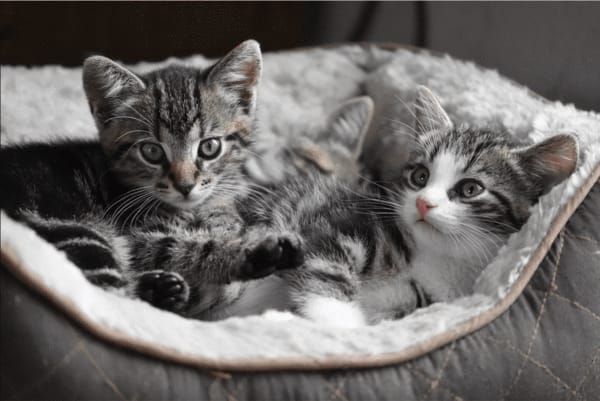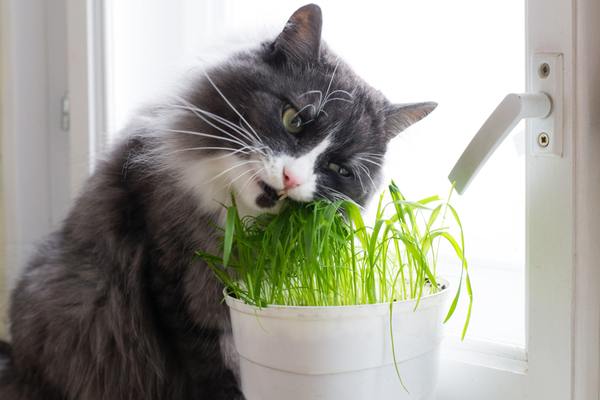July 1, 2022 |12 min read
Skin Lumps and Bumps in Cats Explained

Written by

Updated Oct 24, 2025
You're having a good time with your kitty, and as you're petting them — wait, what's that?
Discovering a skin lump or a bump on your pet can be worrisome. You start to think of the worst — is it an infection? Potentially cat skin cancer? The bump or lump could be from a simple bee sting or as frightening as a cancerous skin tumor. Regardless, it is important to take immediate precautions and consult your veterinarian to assess your cat's health, as a prompt check can help determine if treatment is needed.
Some skin lumps and bumps in cats can be small and circular, while others can be large and irregular. Some may have a strange red color, while others may have no distinct color from the cat's skin. If the lump or bump you found on your kitty gives you sleepless nights, this blog explains everything you need to know about skin lumps and bumps on cats, from recognizing common cases to exploring potential treatments.
Are Cancerous Lumps on Cats Hard or Soft?
You know how worrying it can be to find a lump on your cat's skin — cancer hits your mind. But not all lumps on pets are cancerous.
Cancerous lumps in cats are not always soft or hard — Some can be hard and others soft, while others also change from soft to hard with time. Cancerous lumps in the cat have one thing in common: they spread quickly to other parts of the body, affecting healthy tissue.
The lumps you find on your cat are benign or malignant. However, it can be challenging to conclude with the naked eye — most lumps, malignant or benign, look similar. A biopsy or other diagnostic tests are often necessary to determine their type and assess any risk. Your veterinarian can tell more about these skin masses based on their appearance, texture, where they are on the body, and how quickly they're growing.
Cat Litter That Prioritizes Their
Health & Your Happiness.
to get your first bag for only $14.99
Why the Location of Skin Lumps Matters
When examining any skin lump or bump on your cat, it’s important to pay attention to its exact location on the body. Some lumps are more common in certain areas, and the location can help your veterinarian narrow down possible causes:
- Neck or jaw lumps may relate to swollen lymph nodes or dental issues
- Back, spine, or shoulder lumps could result from cysts, abscesses, or even trauma from rough play
- Leg or paw bumps are often caused by insect bites, stings, or minor injuries
- Belly lumps may be nipples (which can be mistaken for growths), benign fatty deposits (lipomas), or, rarely, tumors
- Head, ear, or face bumps may indicate allergic reactions, parasite bites, or glandular swelling
Documenting the position of a lump not only helps your vet diagnose the condition more accurately, but it can also alert you to changes that may signal something more serious. If you notice a lump appearing in sensitive regions such as the ears, mouth, or near joints, seek veterinary attention. Regardless, routine checks of your cat’s body help identify lumps early.
Are Lumps on My Cat Cancerous?
There are a variety of potential explanations for skin lumps on your cat. To determine whether the skin growths on your cat's skin are truly cancerous, your veterinarian can perform one of the following diagnostic tests:
- Fine Needle Aspiration (FNA) - A fine needle is inserted into your cat's lump to suck out cells. The vet then places the cells on a slide and examines them through a microscope. If inconclusive results, your vet can send the sample to specialists for further examination. This is the most common diagnosis of lumps and bumps.
- Impression smear - If the lumps contain discharges, your vet can rub the slide onto the tip and conduct a similar examination with an FNA.
- Lab test - If the lump discharges fluid, the fluid can be extracted and taken for further analysis in the laboratory.
- Biopsy - When the FNA examination is inconclusive, your vet can conduct a biopsy. The biopsy can be either incisional or excisional. An incisional biopsy involves surgical removal of the lump, while an excision involves removing the entire lump for examination.
So, don't jump to conclusions if you find a soft or a hard lump on your cat. It would be best to have your pet evaluated for common cat diseases, and your veterinarian can help you understand more about the lump based on its appearance and the evaluation performed.
When Should I Worry About a Cat’s Skin Lump?
Are you worried that a large lump appeared on the cat overnight? It's understandable to be frightened. But are cat skin lumps normal? Does my pet need to see a vet immediately to address their skin condition?
Understanding when a lump is a cause for concern requires knowledge of both benign and malignant growths. While you should not ignore a new cat lump on the neck, in many cases, such lumps are nothing to worry about. Although when certain symptoms occur, like rapid growth or discomfort, it may require urgent attention. Your local vet has probably encountered countless lumps and bumps, and they can help you.
If you realize that your cat has a lump the first step is to take a deep breath. Next, note the size, color, location, and any other distinct features of the lump. Then contact your vet for more analysis; they will be able to narrow down any possible skin issues best.
However, seek immediate specialized treatment if you notice the following aspects of the lump:
- The lump/bump is painful to the touch or when the cat moves
- The lump is growing, changing, or spreading to other parts like a skin infection
- The skin area has changed color or is swollen
- Your cat was diagnosed with cancer in the past
- The lump is bleeding or discharging fluids
- Your cat is a short-haired breed susceptible to cancer
- Your cat has advanced in age (7 years or older). Older cats need extra attention for better lives. When your cat enters the golden age, senior pet care begins to look different as physical and mental health changes can change rapidly. Regular check-ups are vital as they lower the risk of health problems.
If a large lump appeared on the cat overnight and increased in size or changed location, it could result from allergic reactions. Seeking medical attention for your cat's condition immediately can help determine whether the lump is benign or malignant., ensuring timely treatment.
Is it Normal for Cats to Have Skin Lumps?
It's important to note that lumps and bumps are not always nasty. It's quite normal for cats to have benign lumps in their lifetime.
However, you mustn't assume every lump or bump is benign, as some can be cancerous.
10 Common Types of Lumps in Cats
Benign lumps and bumps cannot spread to other parts of the body. This makes most of them of little concern or threat to your cat's life.
Here's a closer look at common skin problems, specifically benign lumps and bumps in cats:
1. Abscesses - These are often caused by foreign bodies, bites, or other traumas. Abscesses develop as pus-filled lumps or pockets. These skin growths can cause discomfort and irritation to the cat, but can be treated easily. In some instances, cleaning the wounds is effective.
2. Cysts - Also referred to as sebaceous cysts, these are common lumps on felines. They are caused by the clogging of oil produced by the sebaceous gland The oil gets clogged under the skin, resulting in swelling and infection. On many occasions, cysts swell and burst by themselves. But some may need a vet intervention. Cysts don't present a threat to your cat's health as they rarely become malignant tumors.
3. Hives - They develop as small red bumps resulting from insect bites and allergic reactions to cat food and contact. Hives can be difficult to notice, even when petting your cat. However, you can find small raised hair tufts or skin sensitivity.
4. Lipoma -These fatty, soft, movable lumps often develop under the skin. They can occur in any part of the cat's body and vary in size from small to fairly large. Lipoma has no severe effects on your cat, but it is essential to have them checked by your vet to confirm they are not cancerous bumps.
5. Cat acne - Similar to humans, cats can get acne. Most of the time, you may not realize when your cat has acne, but if the acne becomes infected, you can notice bumps around the chin area. Washing the skin with medicated detergents to relieve irritation and any itchiness.
6. Nipples - Don't be surprised! Male and female cats have nipples on their bellies. If you are unsure whether the swelling you found on your cat's belly is a nipple or a lump, try to locate the corresponding one on the other side. If still unsure, consult your vet for advice that can help determine the exact nature of the lump.
7. Granulomas - These lumps develop as red bumps with a crust. They often appear firm and aggressive. Granulomas can also develop under the skin and feel firm.
8. Skin tags and warts - A skin tag or a wart are also common types that shouldn't give you sleepless nights. They rarely require medical treatment unless they bleed regularly or your cat scratches them when grooming.
9. Parasites and Stings - Does your cat go outdoors? Then, don't panic when you find a bump or a lump on the skin after an outdoor play. Bee, mosquitoes, and wasp stings can cause a bump or lump on your cat's skin. They are less harmful unless they occur on your cat's face.
10. Similarly, parasites such as fleas and ticks can affect your pet's skin. When you remove the parasite, the bump can heal within a short time often without any professional veterinary treatment.

Time to See a Vet? Let PrettyLitter Help You
All lumps (benign and malignant) can manifest in different sizes, shapes, and colors. Therefore, as much as you would like to assess a hard lump and confirm that it is not cancerous, you really need to take your cat to the vet for further examination.
If you notice a large lump has appeared on the cat overnight, don't hesitate to seek medical attention. Professional veterinarians can examine the lump to determine whether it is a malignant tumor or just a minor bump recommending further treatement if necessary.
At PrettyLitter, we understand that cats are notorious for hiding illnesses. If you want to learn more about how you can improve and maintain your cat's health, get started with PrettyLitter. Your cat will thank you!
Sources:
- Moriello, Karen A. "Tumors of the Skin in Cats - Cat Owners." Merck Veterinary Manual, Merck Veterinary Manual, Aug. 2018, https://www.merckvetmanual.com/cat-owners/skin-disorders-of-cats/tumors-of-the-skin-in-cats
- People's Dispensary for Sick Animals. "Found a Lump on Your Cat?" PDSA, Sept. 2018, https://www.pdsa.org.uk/pet-help-and-advice/pet-health-hub/symptoms/found-a-lump-on-your-cat
- Vera, Sharilyn. "Cat Vomiting & Other Irregularities to Mention During Your Cat's Checkup." PrettyLitter, 11 Sept. 2019, https://www.prettylitter.com/blog/cat-vomiting-irregularities-and-checkups







